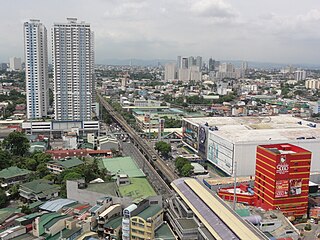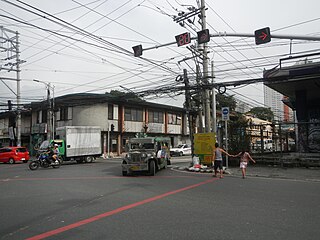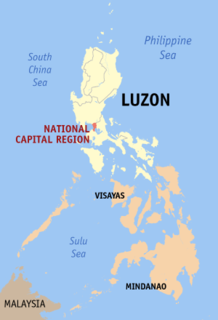This article relies largely or entirely on a single source .(August 2016) |
Magsaysay Boulevard | |||||||||||
|---|---|---|---|---|---|---|---|---|---|---|---|
| Manila Light Rail Transit System | |||||||||||
| Location | Magsaysay Boulevard corner V. Mapa Street, Santa Mesa, Manila | ||||||||||
| Owned by | Light Rail Transit Authority | ||||||||||
| Line(s) | Line 4 | ||||||||||
| Platforms | Side platform | ||||||||||
| Tracks | 2 | ||||||||||
| Construction | |||||||||||
| Structure type | Underground | ||||||||||
| Disabled access | Yes | ||||||||||
| Services | |||||||||||
| |||||||||||
Magsaysay Boulevard station is a proposed station along the planned Manila Light Rail Transit System Line 4 (Line 4) in Manila, Metro Manila, Philippines. It will be located a few meters south of the intersection of Magsaysay Boulevard and V. Mapa Street in Santa Mesa. [1]
The Manila Light Rail Transit System Line 4 is a proposed rapid transit line to be built in Metro Manila and Rizal in the Philippines. When completed, it will be the second rapid transit line serving the province of Rizal after the extension of Line 2 to Antipolo.

Metropolitan Manila, officially the National Capital Region (NCR), is the seat of government and one of the three defined metropolitan areas of the Philippines. It is composed of 16 cities namely: the City of Manila, Quezon City, Caloocan, Las Piñas, Makati, Malabon, Mandaluyong, Marikina, Muntinlupa, Navotas, Parañaque, Pasay, Pasig, San Juan, Taguig, and Valenzuela, as well as the municipality of Pateros.

The Philippines, officially the Republic of the Philippines, is an archipelagic country in Southeast Asia. Situated in the western Pacific Ocean, it consists of about 7,641 islands that are categorized broadly under three main geographical divisions from north to south: Luzon, Visayas, and Mindanao. The capital city of the Philippines is Manila and the most populous city is Quezon City, both part of Metro Manila. Bounded by the South China Sea on the west, the Philippine Sea on the east and the Celebes Sea on the southwest, the Philippines shares maritime borders with Taiwan to the north, Vietnam to the west, Palau to the east, and Malaysia and Indonesia to the south.
When completed, the station will serve as the western terminus of the line. It will also be an interchange station with the Manila Line 2 V. Mapa station. The station shall also serve the following destinations: Unciano Colleges and General Hospital, SM City Santa Mesa, and other nearby establishments.

The Manila Light Rail Transit System Line 2, also known as MRT Line 2, LRT Line 2, MRT-2, LRT-2, or Megatren, is a rapid transit line in Metro Manila in the Philippines, generally running in an east-west direction along the Radial Road 6 and a portion of the Circumferential Road 1. Although operated by the Light Rail Transit Authority, resulting in its being called "LRT-2", it is actually a heavy rail, rapid transit system owing to its use of electric multiple units instead of the light rail vehicles used in earlier lines and is presently the only line utilizing such vehicles in the country. Envisioned in the 1970s as part of the Metropolitan Manila Strategic Mass Rail Transit Development Plan, the eleven-station, 13.8-kilometer (8.6 mi) line was the third rapid transit line to be built in Metro Manila when it started operations in 2003. It is operated by the Light Rail Transit Authority (LRTA), a government-owned and controlled corporation attached to the Department of Transportation (DOTr) under an official development assistance scheme.

V. Mapa station is a station on the Manila Light Rail Transit System Line 2. It is one of the many elevated stations that can be found on the line and also one of the four stations in the line with a reserve track nearby together with Santolan, Anonas and Araneta Center-Cubao. The station during its inception was formerly called as "G. Araneta Station" but was renamed into the current name due to the minor realignment of some stations that has caused the change of proximity to the V. Mapa street. The station serves the areas of Santa Mesa, Manila, Quezon City and San Juan. The station is located at Ramon Magsaysay Boulevard and Victorino Mapa Street at Santa Mesa, Manila.
The Unciano Colleges and General Hospital (UCGH) is located in V. Mapa Street corner Guadalcanal Street, Manila, Philippines. Founded in 1976








